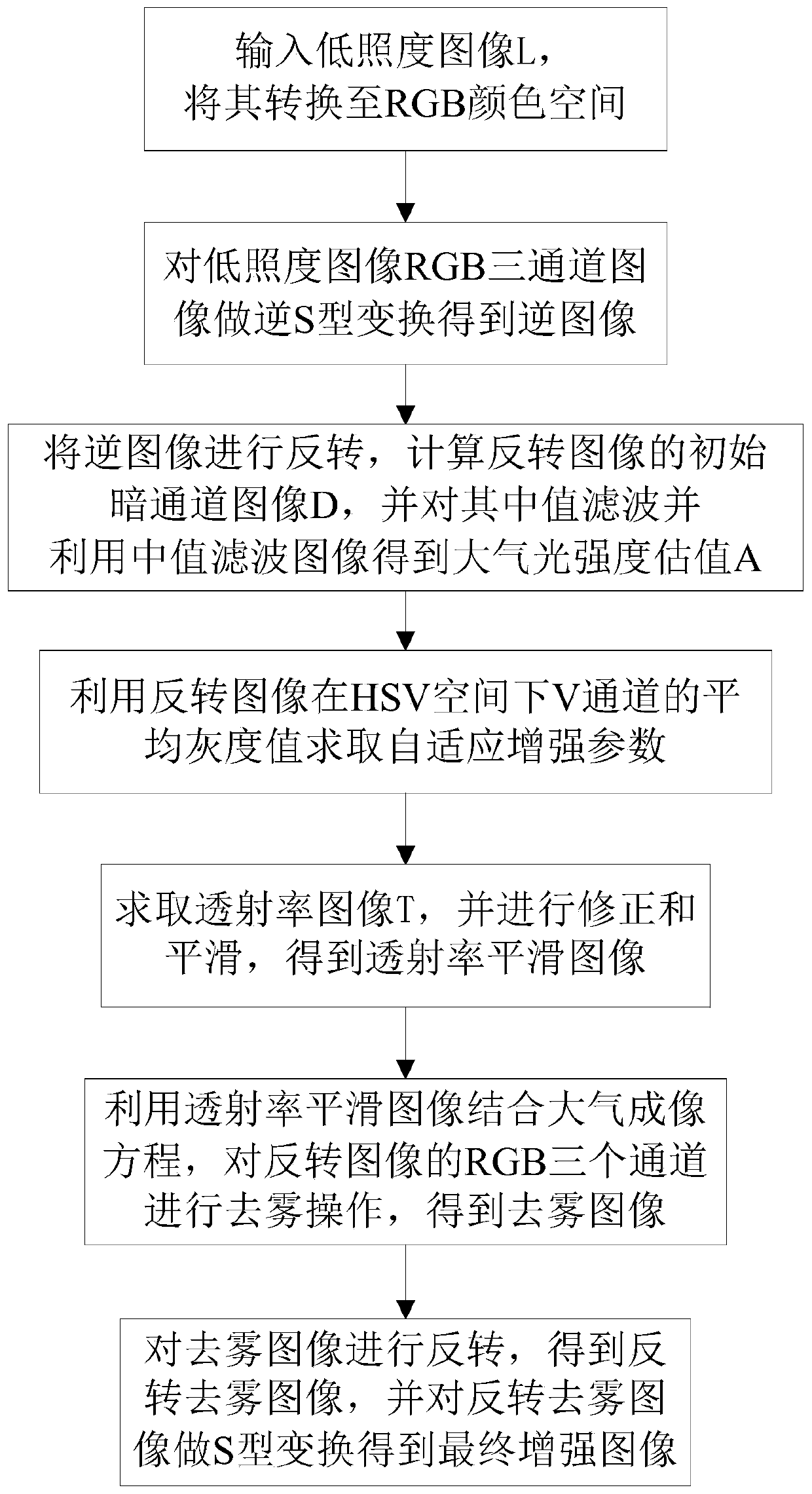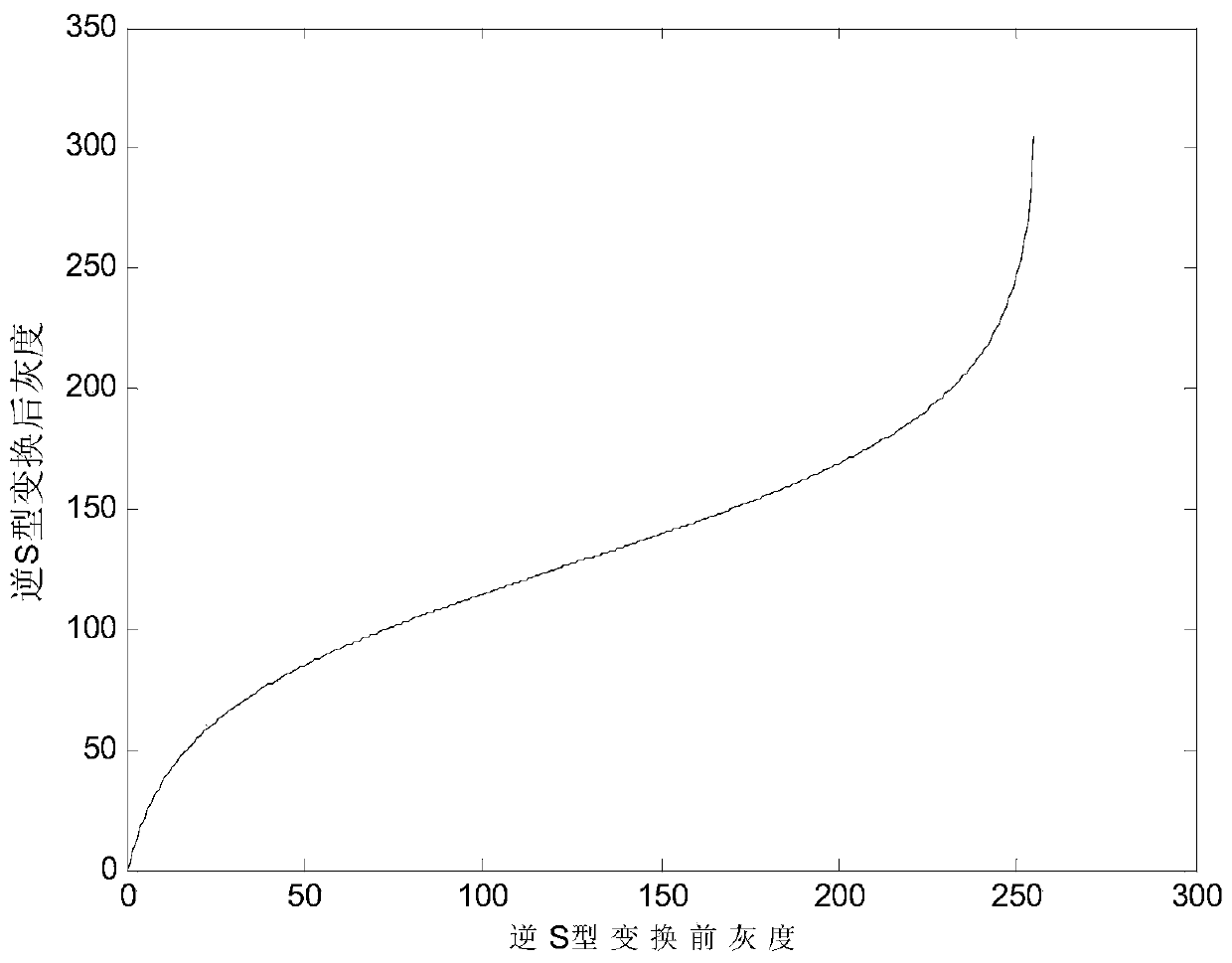An Adaptive Low-Illumination Image Enhancement Method for Reducing Color Cast
An image enhancement and low illumination technology, which is applied in image enhancement, image analysis, image data processing, etc., can solve problems such as over-suppression or over-enhancement of bright areas, poor processing of brighter areas of the image, and aggravated color cast of the image.
- Summary
- Abstract
- Description
- Claims
- Application Information
AI Technical Summary
Problems solved by technology
Method used
Image
Examples
specific Embodiment approach 1
[0075] Specific implementation mode one: combine figure 1 To describe this embodiment,
[0076] An adaptive low-light image enhancement method for reducing color shift, comprising the following steps:
[0077] Step 1, input the low-illuminance image L, and convert it to the RGB color space, and obtain the RGB three-channel image of the low-illuminance image L;
[0078] Step 2, performing an inverse S-type transformation on the RGB three-channel image of the low-illuminance image L, weakening the color shift phenomenon of the low-illuminance image, and obtaining the inverse image I; figure 2 is the inverse S-shaped transformation curve adopted;
[0079] Step 3: Invert the inverse image I to obtain the inverse image H, calculate the minimum value of each pixel of the inverse image H in the three channels of RGB, obtain the initial dark channel image D, and process the initial dark channel image value filtering to obtain the median filtering image D median , using the median...
specific Embodiment approach 2
[0089] The formula of the inverse S-type transformation described in step 2 of the present embodiment is as follows:
[0090] I(i,j)=255*(a-ln(-1+260 / (L(i,j)+4))) / b
[0091] Among them, I(i,j) and L(i,j) are the pixel points in row i and column j of the inverse image I and low-illumination image L respectively; a and b are transformation parameters, and the value of a is 4. The value of the transformation parameter b is 8.
[0092] Other steps and parameters are the same as those in the first embodiment.
specific Embodiment approach 3
[0094] The specific process of step 3 of this embodiment includes the following steps:
[0095] Step 31, using the formula H(i,j)=255-I(i,j) to invert the inverse image I to obtain an inverse image H;
[0096] Wherein, I(i,j) is row i in reverse image I, pixel point j; L(i,j) is row i in reverse image H, pixel point j column;
[0097] Step 32, use the formula Obtain the initial dark channel image D;
[0098] Among them, D(i, j) is the i-th row and j-th column pixel in the initial dark channel image D; min represents the minimum value operation; c is R, G, B, corresponding to the three red, green and blue in the RGB color space color channel, H c (i, j) is the i-th row and the j-th column pixel point of a certain channel of the inverted image H in the RGB color space;
[0099] Step 33: Perform a median filter operation on the initial dark channel image to obtain a median filter image. The specific calculation formula is as follows:
[0100]
[0101] Among them, D medi...
PUM
 Login to View More
Login to View More Abstract
Description
Claims
Application Information
 Login to View More
Login to View More - R&D
- Intellectual Property
- Life Sciences
- Materials
- Tech Scout
- Unparalleled Data Quality
- Higher Quality Content
- 60% Fewer Hallucinations
Browse by: Latest US Patents, China's latest patents, Technical Efficacy Thesaurus, Application Domain, Technology Topic, Popular Technical Reports.
© 2025 PatSnap. All rights reserved.Legal|Privacy policy|Modern Slavery Act Transparency Statement|Sitemap|About US| Contact US: help@patsnap.com



